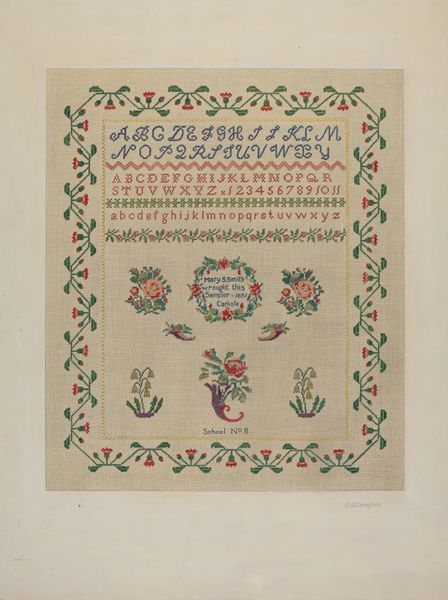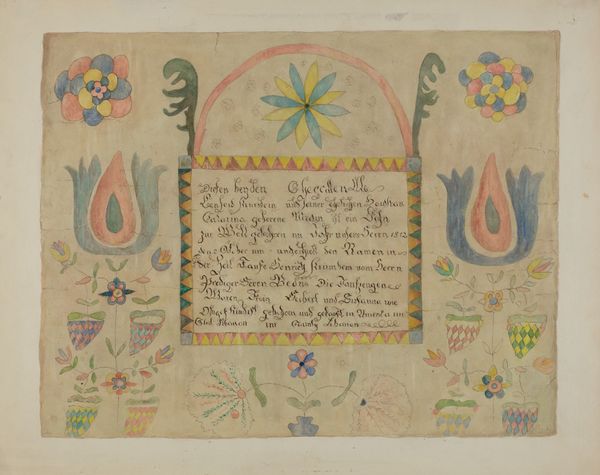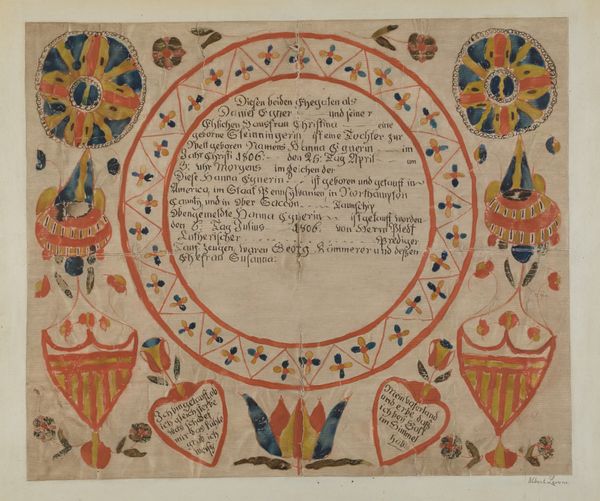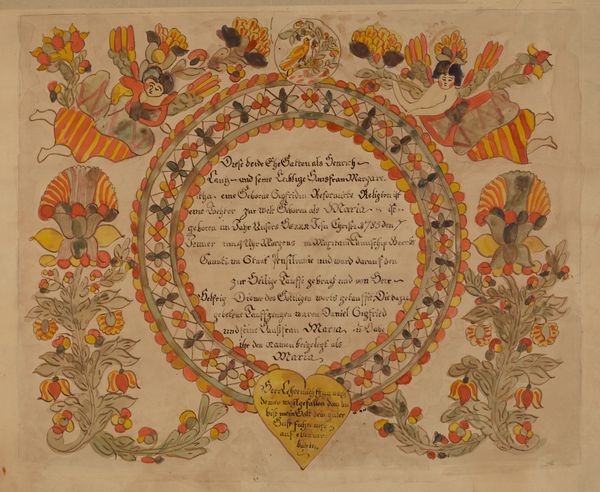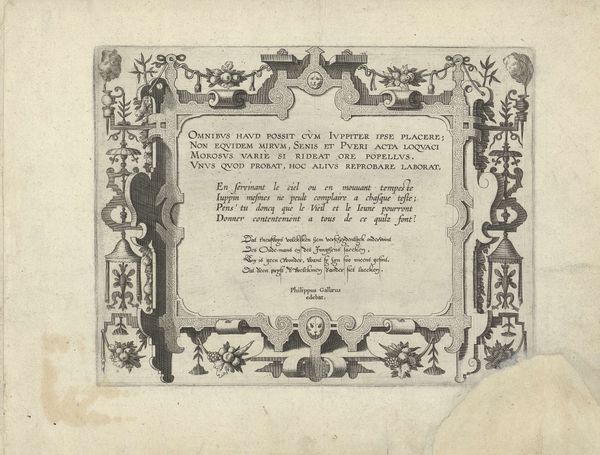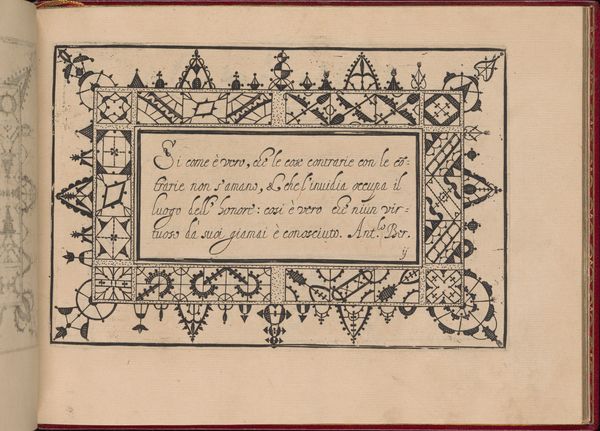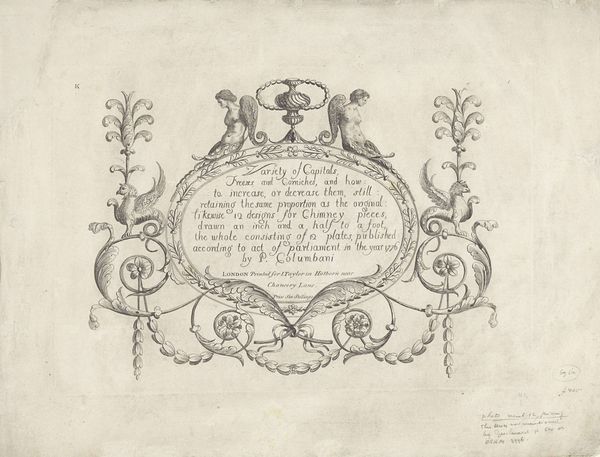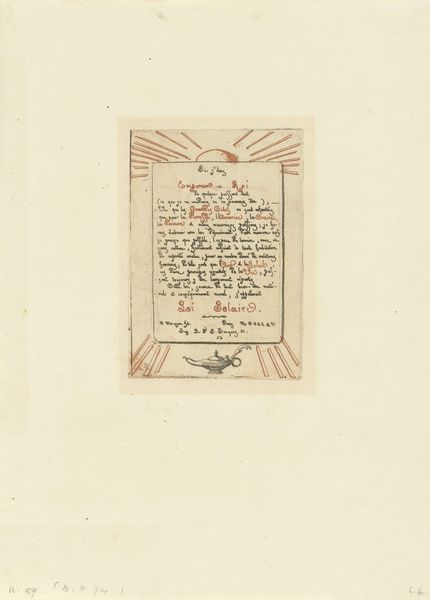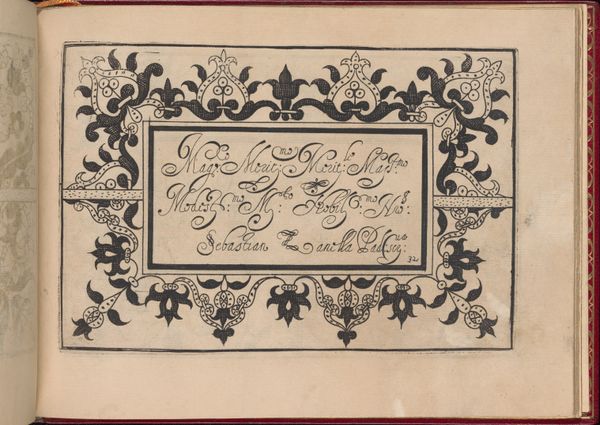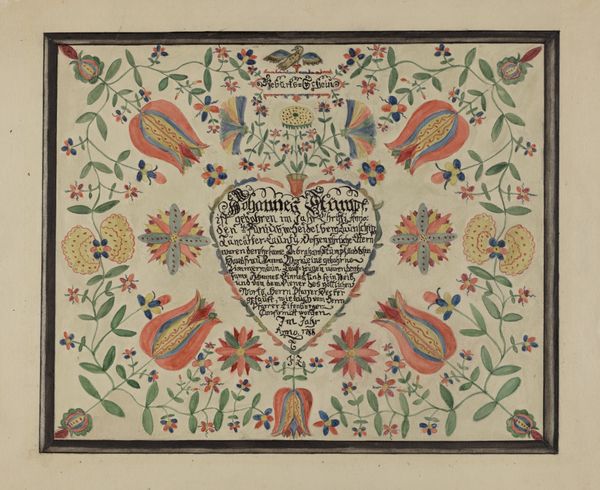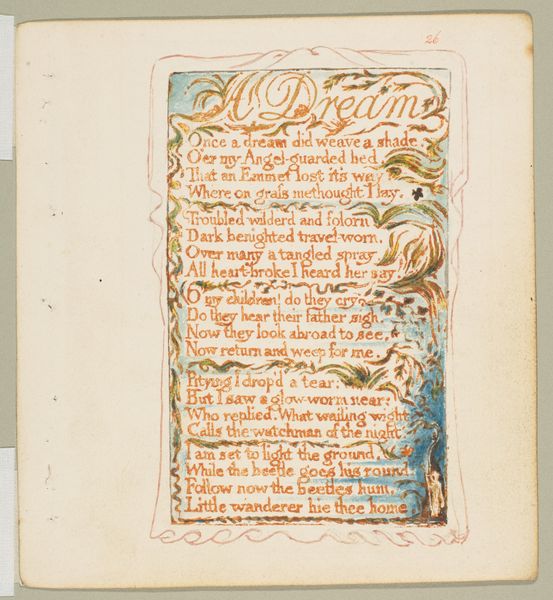
drawing, paper, watercolor
#
drawing
#
water colours
#
paper
#
watercolor
#
folk-art
#
geometric
#
decorative-art
#
watercolor
Dimensions: overall: 44.4 x 52.3 cm (17 1/2 x 20 9/16 in.)
Copyright: National Gallery of Art: CC0 1.0
Curator: Let's consider this watercolor and ink drawing, simply titled "Fraktur," created by Richard Barnett sometime between 1935 and 1942. It's a really fascinating example of folk-art revival. Editor: My first impression is the piece evokes a real sense of warmth. The colours are muted but still very comforting, and the stylized geometric flower shapes that create this border give it an intimate feel, almost as if someone created it to be displayed in a home. Curator: Absolutely. "Fraktur" as a folk art tradition often served exactly that purpose within Germanic communities in America, typically Pennsylvania. In this case it's interesting because the writing indicates an Ohio origin. These works functioned as birth and baptismal certificates, family registers, or even rewards of merit for children, marking significant moments of individual and collective history. What this signals is that the drawing's intention would be deeply personal and embedded within a complex web of family and community. Editor: And that context shifts the way I see it. I'm suddenly much more aware of the texture of the paper itself, of the way the watercolors saturate into the weave. It brings to mind the hand-made and hand-processed character of these family documents, made outside the marketplace and reflecting this intricate play of family labor and artisanal methods. There is a tension between the functionality as a birth certificate and its almost "high art" aesthetic, don't you think? Curator: Precisely, challenging those distinctions. The style, inspired by the historical roots, uses a visual vocabulary to inscribe identity. But in that respect, it does even more. We need to ask questions about cultural continuity and change, particularly the intersections of ethnicity, class, and regionalism during this period to fully understand it. How might its display today within a museum change its initial purpose? Editor: Good point. By exhibiting this work in a public space, it removes the work from its familial origins to broaden that community it initially sought to reach. Considering its materiality next to other similar drawings lets viewers better understand its story and celebrate its form. Curator: For me, understanding how objects like "Fraktur" were tools of resistance to homogenizing forces or attempts to preserve particular traditions speaks volumes. Editor: Agreed. The real value here comes from recognizing the labor of love as part of our social fabric.
Comments
No comments
Be the first to comment and join the conversation on the ultimate creative platform.

